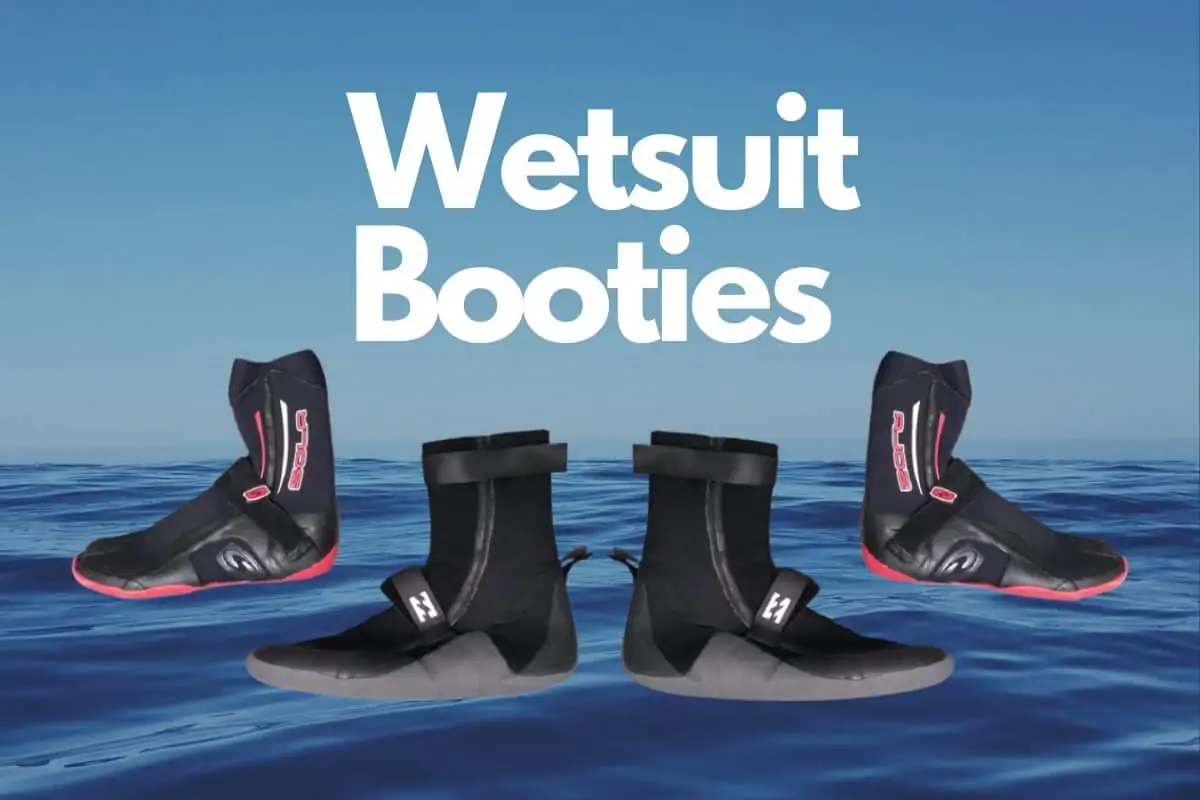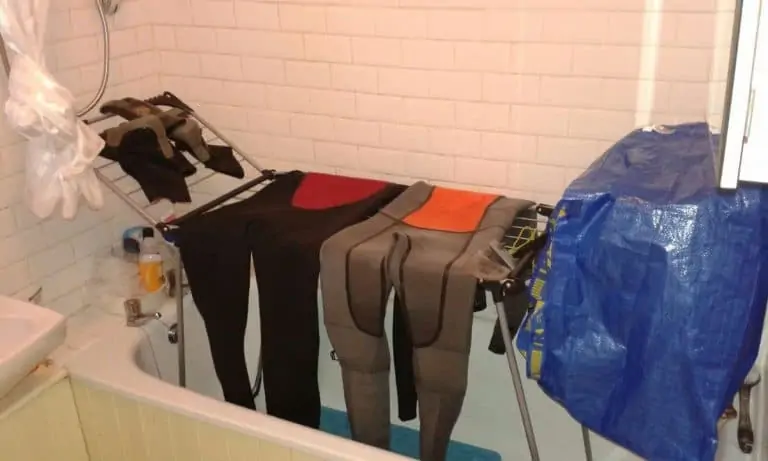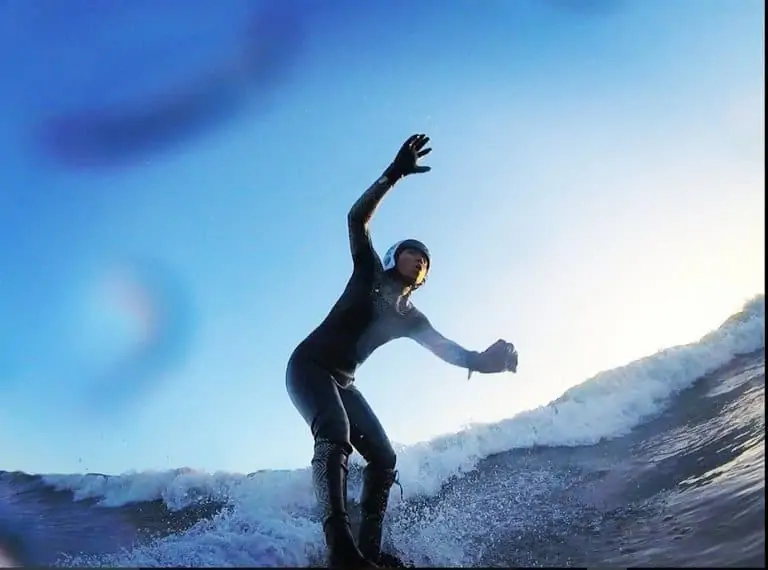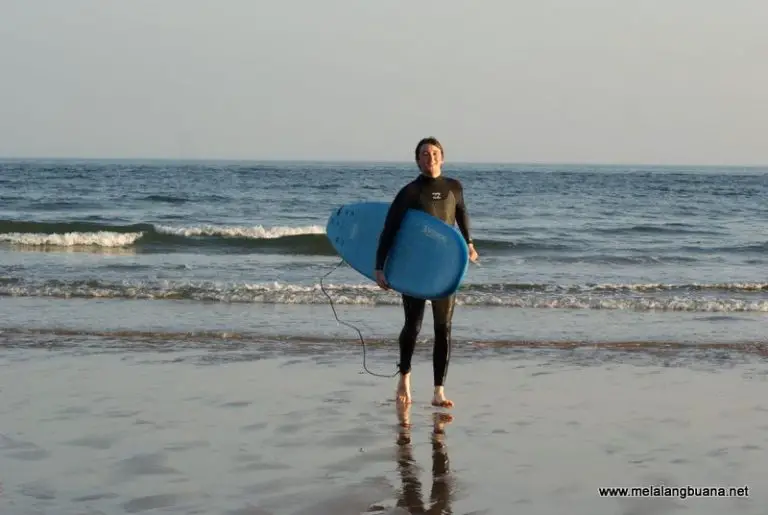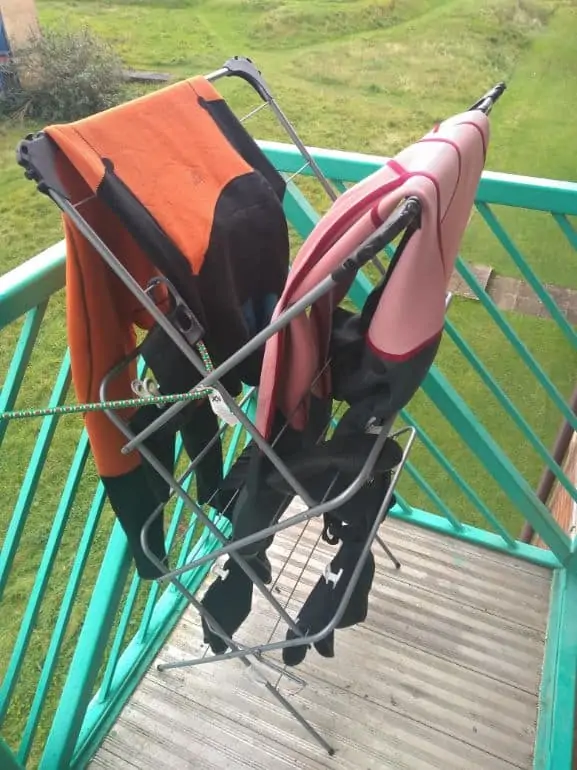Wetsuit Booties for Surfing: In-depth Guide
Going surfing in the colder months of the year means getting some extra accessories. If you’re really into surfing and want to keep going through these months, you’re going to need some wetsuit booties for surfing.
With this in mind, I prepared this full and exhaustive guide to everything you need to know about wetsuit booties for surfing. Being from a cold water area myself and having surfed for decades in cold seas, I can tell you there’s a lot more to wetsuit booties than meets the eye to get a good surfing experience from them.
So, let’s run through all the key points in this guide.
Let’s get started!
What are the Best Wetsuit Booties for Surfing?
They should be a very tight fit when dry, have a split-toe design, and straps across the foot and around the ankle to keep them from ballooning and filling too much when you get in the water. All this will be explained below in this article.
My recommended wetsuit booties are the split-toe O’Neill PsychoTech boots since they are extremely well designed and will give you maximum warmth and function when out in the water.

Why split-toe wetsuit boots? Because they give you more balance by allowing your big toe to move more freely, which is a huge help when riding waves. Try to get split-toe booties that have a sole below the split – this will stop your leash getting tangled in the gap between toes.
My Current Surf Wetsuit Booties (+ My Wife’s!)
Below, you can see my current surf wetsuit booties, the Billabong split-toe 5mm booties with straps across the foot and on the upper ankle.
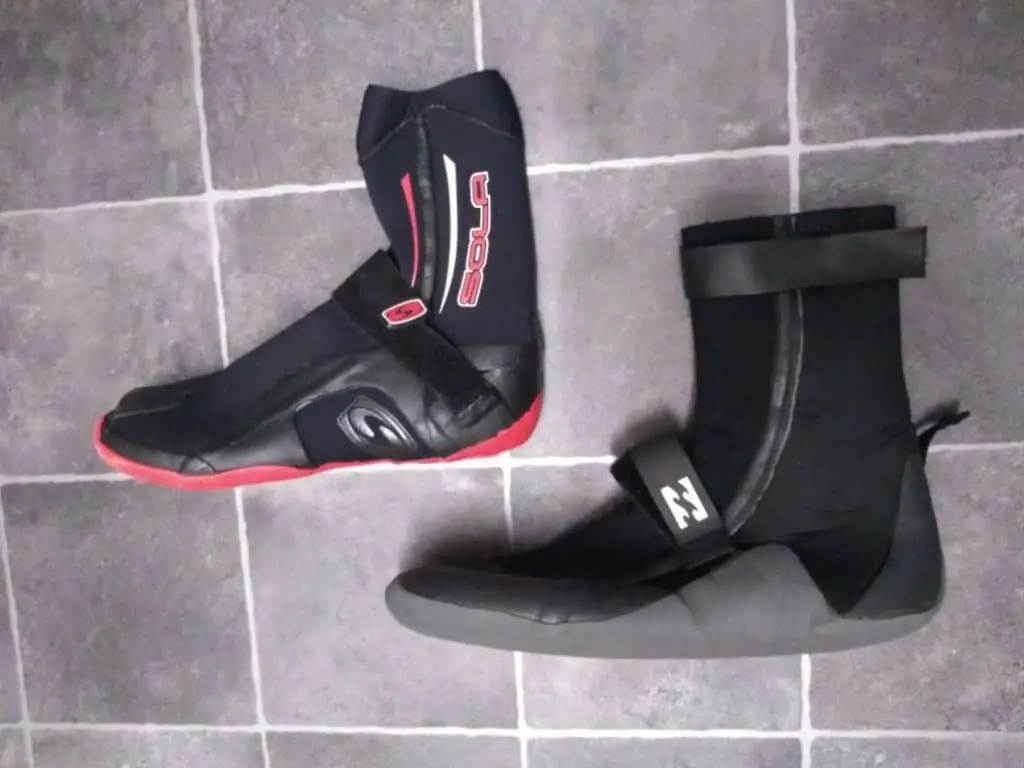
Although quite good, these are not as good as the ones my wife has, made by UK brand Sola. You can no doubt see the added features in the Sola surf booties, with the extra rubber around the sides of the boot and design around the ankle/calf to prevent water getting in.
In all honesty, I wanted to get the more premium version but they did not have them in my size in the store, so I had to settle for the mid price-point Billabong ones.
As an extra point, note how, despite both booties having a split-toe design, the red Sola ones are actually joined on the sole of the boot, whereas mine are not.
This nice design feature means that you won’t get your leash caught in between (which has happened to me), a nice extra feature.
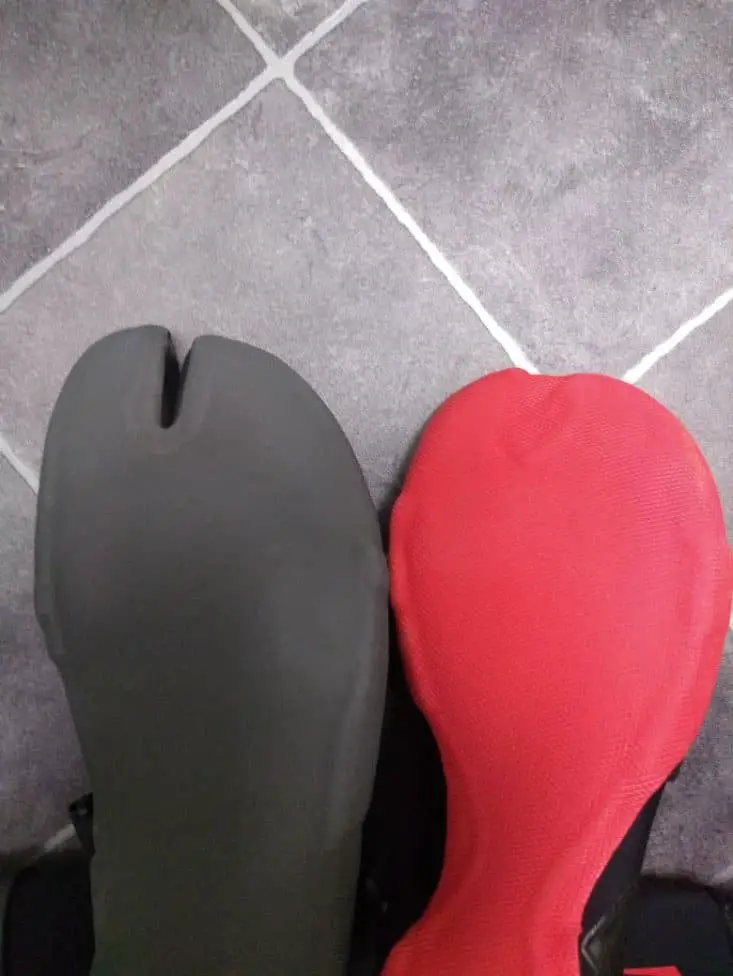
Which reminds me of another point: if unsure about sizing, buy surf booties in a local store to get the perfect fit (usually a size or half size down on your standard shoes).
Types of Wetsuit Booties
The main two types of wetsuit booties for surfing are just a standard boot without any fancy features, and the split toe design of wetsuit bootie.
The standard one will be cheaper because it is less well-designed. It is not nearly as good for surfing as the more expensive split toe option.
Split-toe wetsuit booties offer more balance and control on your surfboard. They have that split toe, but it’s amazing how much difference this makes in terms of giving you control and balance.
As you might know, your big toe is really crucial to balance. Being able to move that when you surf might sound like a small thing, but it is really helpful.
So, I would always recommend going for the extra, or the more expensive option. Buy the split toe wetsuit booties because you will benefit from it when you are up and riding on your surfboard in a big way.
How should wetsuit booties fit?
They should be really tight when you put them on dry, almost painfully. When you get out in the surf, they will then expand with water and be a perfect fit. Trust me on this. It’s how I do it. And it definitely works.
If you go a size bigger, or anything that feels like a normal fit on land, they will probably be loose and baggy in the surf. It is terrible because you will be tripping over them, especially on the take-off when you try to get up to your feet when standing.
Do wetsuit booties stretch?
Yes, they stretch when wet. But they don’t stretch in the same ways that your shoes might as you wear them.
So, get them nice and tight when they’re dry, and then they will stretch, and expand in the water. But they won’t really stretch over time in terms of comfort and size.

Photo Credit: Patrick Fore on Unsplash
How do you wear surf booties?
Put them on as you would a sock, after you’ve put on your wetsuit. Do not try to put them on before, because they will get stuck on the inside.
You should also wear wetsuit booties under your wetsuit. So, tuck them in to the ankle or the leg of your wetsuit.
Wetsuit booties should be on your skin, the wetsuit goes over the booties. If not, you will have a lot of flushing of water into the booties, they will fill up, and they might even come off.
So, always tuck them into the leg. Wear your surf wetsuit booties under your wetsuit leg.
How do you dry wetsuit booties?
Hang them upside down at an angle, and put something inside them to air them so that the air and moisture can run out of them. Otherwise, they will never get dry. It’s still hard to get them to dry even doing this, but it’s the best you can do.
Some guides online recommend putting in a plastic bottle with holes in it for ventilation to both keep the shape of the wetsuit boot, so that the air can flow, and the moisture can get out without having anything too big, or anything that will stretch the material.
Still, it’s not easy to do, so don’t expect perfectly dry booties in a few hours. It will take a long time for them to dry completely. And yes, upside down with the ankle facing down at an angle.
Wetsuit Booties Thickness Guide
Generally, follow the same thickness as your wetsuit. So, if you are wearing a five millimeter by four millimeter wetsuit, then you will probably need five millimeter wetsuit booties.
You could go a millimeter above or below this, but I wouldn’t recommend going any more or less.
Wetsuit Booties Temperature
What water temperature do you need to wear wetsuit booties? Anything under 58 degrees Fahrenheit will be a good time to start wearing wetsuit booties. You can go less, but you will probably feel some kind of sting, or burning sensation in your feet and not last that long.
58 degrees and below is the ideal starting point for wetsuit booties. The colder the water the thicker your booties should be.
What to Do About Wetsuit Booties Filling with Water?
Get wetsuit booties that are a very tight fit when dry and that have at least one strap on them. Ideally two, one around the lower shin, and the other around the middle of the foot.
The straps will stop the water from expanding and ballooning in your boots. And it will, also, stop the water getting in from the top, if you get the strap on the top as well.
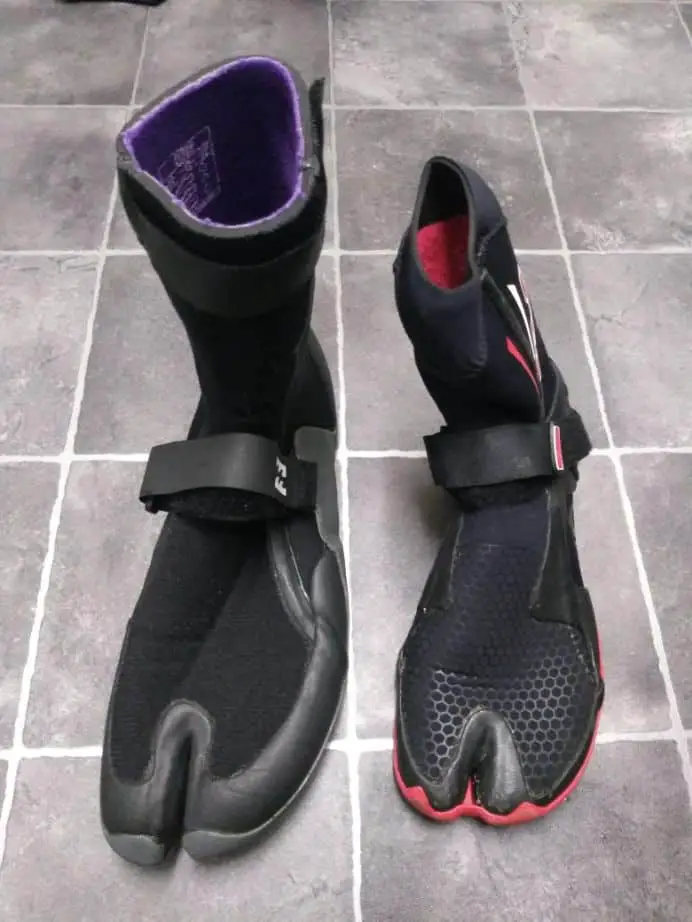
Why do wetsuit booties fill with water?
This happens because the water runs down from your wetsuit. Once you stand up it all flushes down into the booties.
So, a strap on the top of the boot can really help to stop this. The strap across the middle of the foot will also stop that stretching and flushing feeling that can really put you off balance as well.
The other cause of booties filling with water is getting them a size too big, which is usually getting the same as your shoe size. I’d always recommend go at least one size down, maybe even two, but try them on first to be sure.
How to get rid of wetsuit booties’ smell, or stink?
Wash them in lukewarm water with a light detergent like baby shampoo, or a wetsuit shampoo. Then, dry them properly, hanging them upside down as discussed earlier in this article.
If you try to store them when wet, they will also start to smell. So, you need to let them drip dry after you’ve washed them with a light detergent or ideally a wetsuit shampoo, but a baby shampoo will do the trick.
The smell might come back but, remember, if you don’t want a smell, don’t pee in your wetsuit, if you can avoid it. Although, I know most surfers do.
Are wetsuit booties good for surfing?
Not really. They make surfing more difficult. Although, they do add some grip when you’re up and riding, but are harder to transition between the heel and the toes.
They’re also just a little bit clunky feeling because they grip and stick in ways that you wouldn’t expect normally when riding without boots. But if you have to wear them, you have to wear them.
Choose them right to get used to them and make the most of it. So, just make sure you get the surf booties that really are a tight fit and have lots of straps, and made by a good surf brand.
Related Questions
Do surf booties protect from stingrays? Yes in some cases but there’s no guarantee. If you’re surfing in areas with stingrays, just use your common sense and be diligent. Don’t rely on surf booties; you can get reef booties to reduce your risk for this, but they are not made for stingrays!
Can you wear wetsuit booties with zipper for surfing? You can wear wetsuit booties with a zipper for surfing, but they’re not as comfortable as surfing wetsuit booties, and not as well designed.
The zipper will also be a weak point and let in more cold water. Think about that as they might flush as well, although they will definitely be easier to put on and take off.
Recommended Wetsuit Booties for Surfing
My recommendation for many years of trial and error is to get wetsuit booties that are a size too small. They need to have a strap across the foot, and around the ankle too.
As mentioned above, these split-toe O’Neill PsychoTech boots over on Amazon would be my top recommendation for surfing booties given their design and being by a quality brand.
As a more budget option, you could opt for the O’Neill split-toe bootie without the foot strap over on Amazon, saving you around $20 but being a little more prone to filling with water than the more expensive version above.
Get one made by a good surf brand, particularly ones that make good winter wetsuits because they make the best hardware. By that, I mean Xcel, O’Neill, or something similar.
The more rubber you can see on the booties, as in the harder rubber (i.e. not the soft neoprene), the better. It stops them from letting in water along the top.
I bought my wife some nice wetsuit booties by Sola, which were well-designed and made in the UK. They keep her feet extremely warm, as well as easier to put on and take off because of things like loops, and other design affordances that really help.
Spending the extra money on surf wetsuit booties can go a long way. It allows you to have a lot more fun, as well as keeping your feet from feeling like ice blocks, which is not very helpful in the surf can really mess up your surfing pop-up.
Wetsuit booties are essential but if you get the wrong ones, they can also be a nightmare. So, hopefully with this guide, you can get it right first time and choose the perfect wetsuit booties for your surfing experience, and have a lot of fun out in the colder waters and waves.
